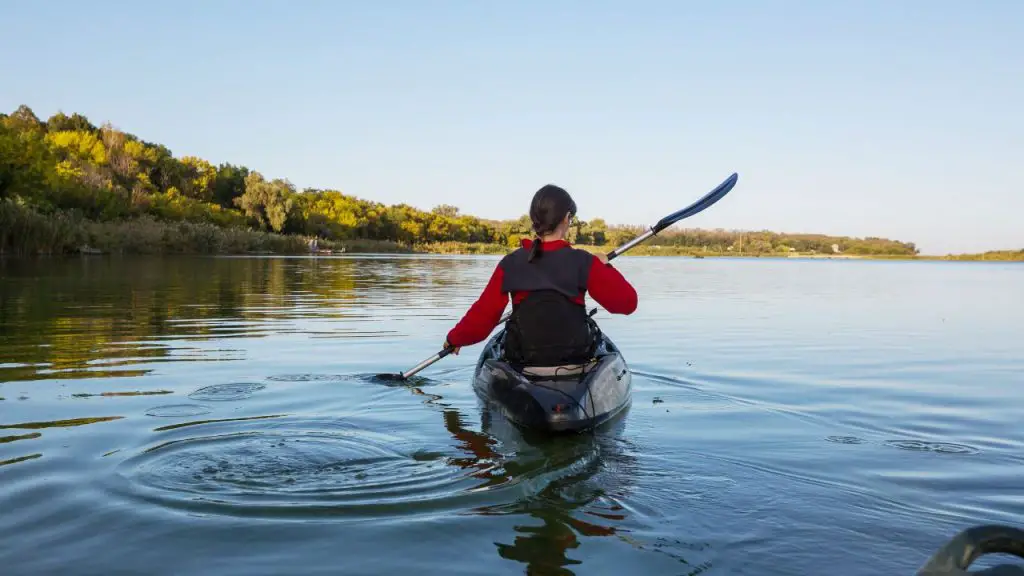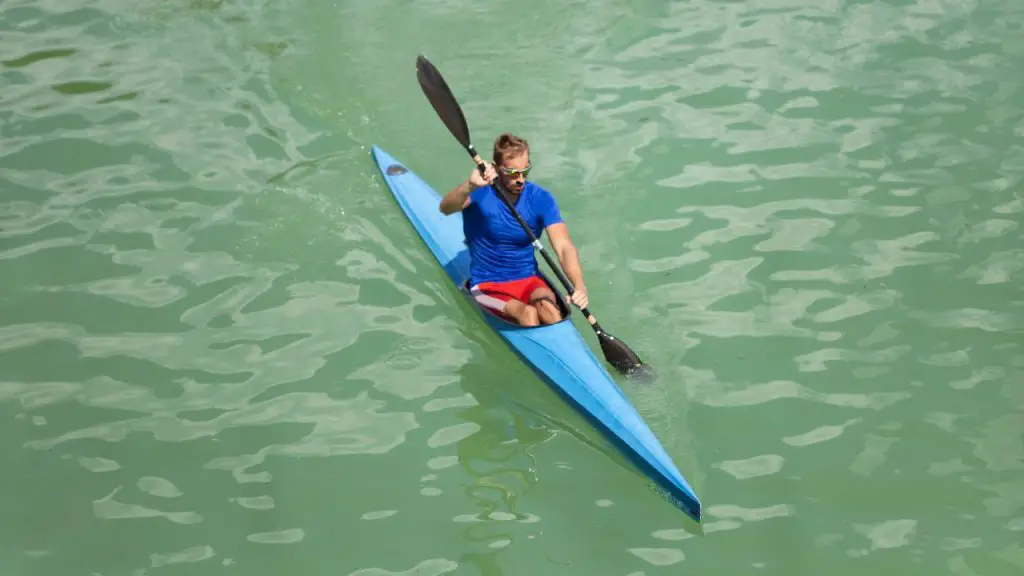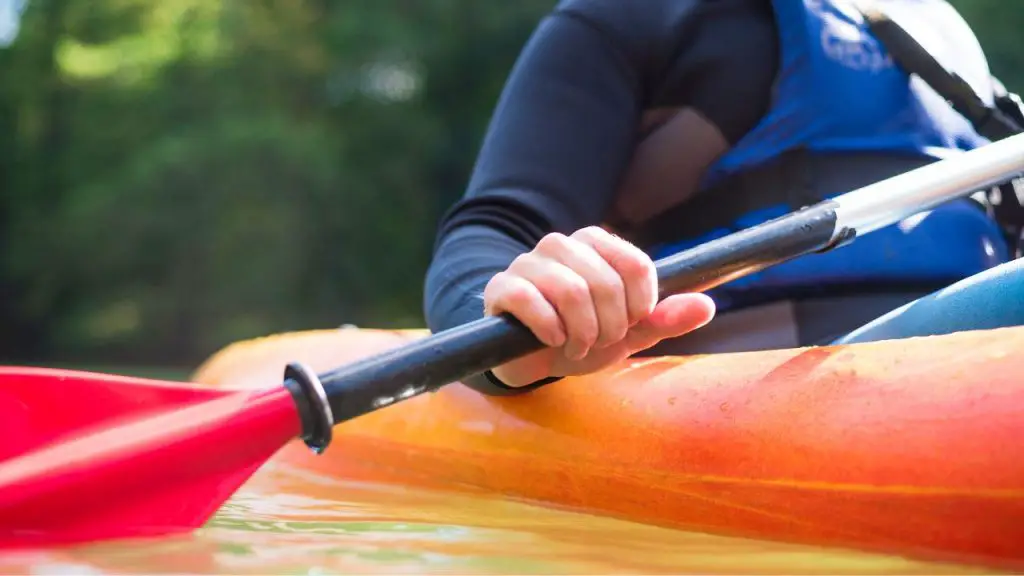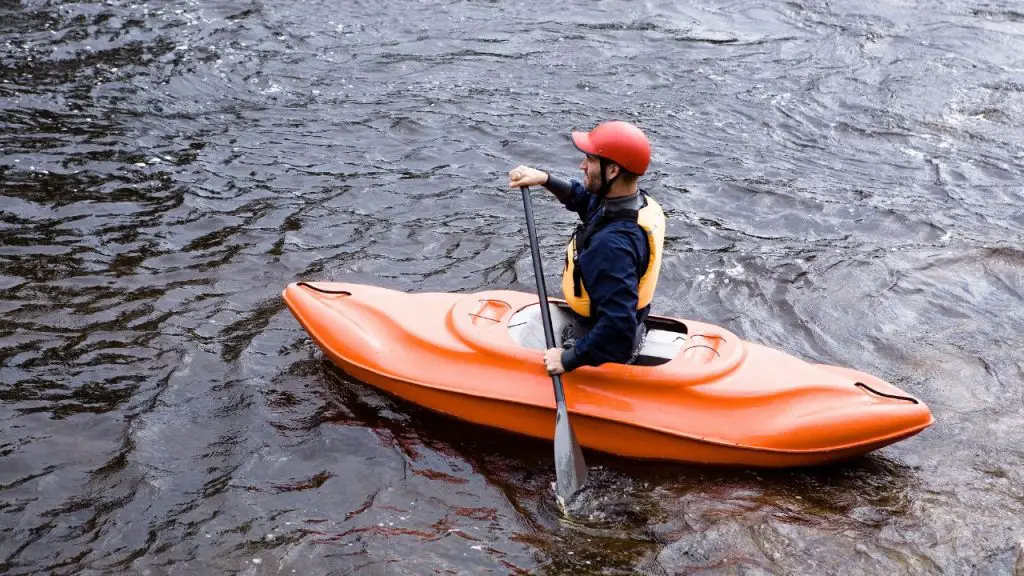Kayaking is one of the outdoor adventures with fans worldwide. However, most people find it challenging for the first time. How to keep kayak straight is the main barrier that makes many people give up.
Fortunately, overcoming it is pretty straightforward. It’s as easy as keeping the proper posture and using the appropriate paddling technique.
This article focuses on what makes a kayak veer off its cause and how you can keep it in a straight line. It is for you if you are struggling to keep the kayak straight. Read on for detailed information.
Table of Contents
Why Does Your Kayak Not Go Straight?

Kayaking is one of the hobbies of many travelers, but what if your kayak does not follow a straight course? This uncommon scenario can ruin your adventure and spoil the fun. It can be due to one or more of the following reasons:
- Inappropriate body posture
- Incorrect handling of the paddle
- Not executing the appropriate paddle strokes
- One hand is dominant over the other
- Waves and currents in the water
- Wind direction changes
How To Keep Kayak Straight
You cannot change the wind, current, or wave direction, but there is something you can do about your paddle handling and your posture. Besides, there are ways to make your kayak go straight.
Kayaking in a straight course is fun and helps you keep track of your direction. You can get lost in the vast waters if your kayak drifts uncontrollably to one side. Consider doing the following to keep it on track:
Proper Body Posture to Balance Kayak

It is challenging to balance on a kayak, especially if you are a novice. Its narrow shape makes it challenging even for the most experienced kayakers.
Any slight imbalance in your posture can make it tip sideways or not move in a straight line.
You can overcome the problem by keeping your body upright or maintaining a recommended posture. It involves making some adjustments, including the following.
1. Sit straight and adopt a relaxed stance with a wide-open chest.
2. Maintain an upright position and relax shoulders and stomach.
3. Focus on the horizon to maintain the kayak’s stability.
4. Do not put more pressure on one side of your kayak when in motion.
5. Ensure your feet always lean against the foot pegs by bending them slightly. That gives you extra balance.
The correct posture when kayaking gives your upper body the freedom to rotate, allowing you to efficiently paddle.
Keep correcting your poor posture as soon as you notice it until you become an expert. Once you get used to it, maintaining a good posture becomes part of you, and your kayak will never again drift away because of poor posture.
Find the Right Type of Paddles for You

Three types of paddles exist: feather blade, asymmetrical blade, and curved blade paddles. These have varying designs and are also used differently. Your kayak may fail to go straight because of your choice of the paddle.
Feather blade paddles are ideal if you want to maintain a straight course. They are the easiest to use and the most recommended for novice kayakers. The blades are designed to counter the wind current and keep the kayak moving forward.
Once you become an experienced kayaker, you can try asymmetrical or curved blade paddles. These are more challenging, but they give you the best forward thrust.
Best Marine Kayak Paddle
Improve Your Paddling Technique

Your kayak may veer off its course because you are not handling the paddle correctly. Holding paddles should be the first skill to learn, even before getting into the water. Your paddling technique can give you control over the kayak or lose control.
You should hold the paddle correctly to make your kaya move in a straight line. It involves doing the following things:
1. dentify the type of blades your paddle has. They can be feather, asymmetrical, or curved.
2. Orient the blades properly, which depends on the type of your paddle.
3. Grip the shaft properly – ensure your elbow is at a 90-degree angle. This creates a paddler’s box that will guide your posture.
4. Relax your hands when holding the paddle shaft
5. Apply the same pressure on both sides and match the stroke. Let one hand do the full-forward strokes while the other does a sweep stroke.
Do Not Let Your Dominant Hand Be

How you grip the paddles and carry out the strokes determines the movement of your kayak. By regulating the pressure that you apply on your right and left hand, you can steer it in a straight line, negotiate a bend, or turn back.
You can keep your kayak in a straight line by not letting your dominant hand be dominant. If you are right-handed, do not let it apply too much power to the paddle.
That is the case if your kayak drifts to the right or away from its predefined course. Just slow down and send equal power to both hands.
Balancing the power on both hands and maintaining the paddler’s box can be challenging and tiresome. If you find yourself in that situation, just relax your grip and let your torso paddle your kayak. It is less strenuous this way.
Predict Kayak Movement
Keeping a kayak straight challenge even experienced paddler. However, they counter it by predicting the kayak’s direction and making the right decisions on time.
By anticipating the kayak direction, you can become a pro paddler in a short time. You only need resilience and proper timing to apply a counter force immediately.

Looking Straight Ahead Instead of Looking at Bow Kayak
Kayaking uses the same golden rule that you learn in driving school that you should always look straight ahead.
Of course, that does not apply when you become a professional driver or paddler. You can look in any direction once you become confident and master the skill.
Looking straight ahead or horizon will also help you maintain a good posture, an essential part of paddling on a straight course.
FAQs
Why does my kayak spin when I stop paddling?
Your kayak will spin when you stop paddling if you are moving fast. More friction on one side of the blade is the reason.
This effect becomes more pronounced at high speeds and can only be countered by applying the same pressure on both sides.
What makes a kayak go straight?
Your kayak can only move in a straight line if you have the correct posture and paddle using the appropriate paddling technique.
Without the two, it will veer off its course or spin around. So, learn to hold the paddle and position yourself correctly in a kayak.
Why does my kayak keep flipping?
Kayaks are designed to be stable under different water conditions. However, it can still flip if water gets rough or there is a sudden change in conditions.
Lifting your head up too early is likely to make you raise your knee. That may cause your kayak to flip.
How do I stop my kayak from drifting?
You can stop your kayak from drifting by identifying the cause and taking the appropriate action. Check your posture and paddling technique.
Are you applying more pressure on one hand than the other? Correct what needs to be, and your kayak should resume its straight course. You may also need to anchor it to prevent water currents from drifting it away.
How do you use a kayak drift anchor?
Drop your anchor off the bow – directly in front of the kayak – through the carabiner.
Pull the trolley line to bring the carabiner and anchor rope until it catches. That will stop current and wind from drifting it away.
Final Sentences
Paddling a kayak in a straight line is a complex skill that may take time to learn and master.
But once you make it a habit, it will give the best kayaking experience during your outdoor adventures.
But remember to always carry your paddling gear and safety equipment on every expedition.
Thank you for reading this article at Windpaddle. We appreciate your time and invite you to explore the site for related articles. Also, kindly share it with your aspiring paddlers.

